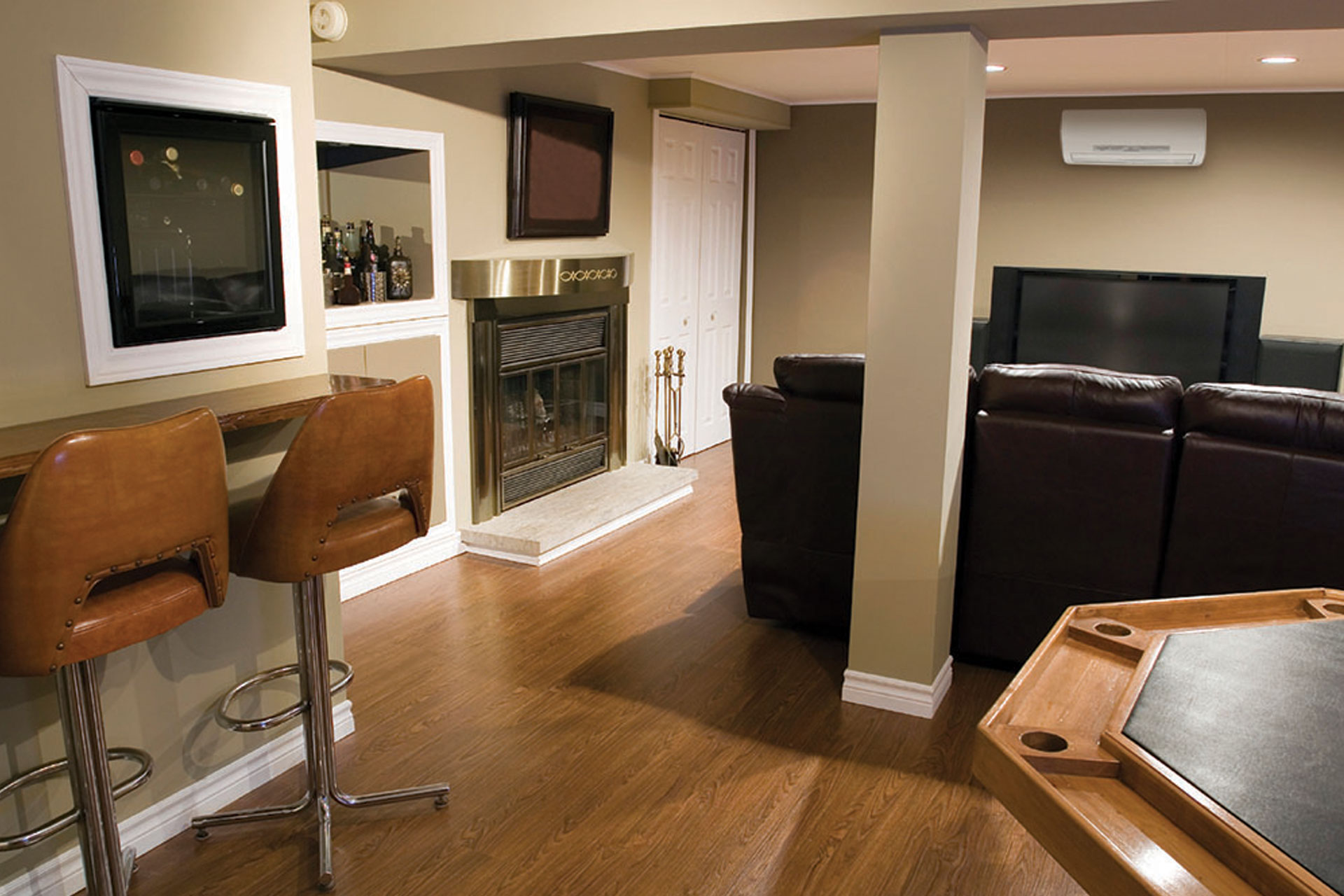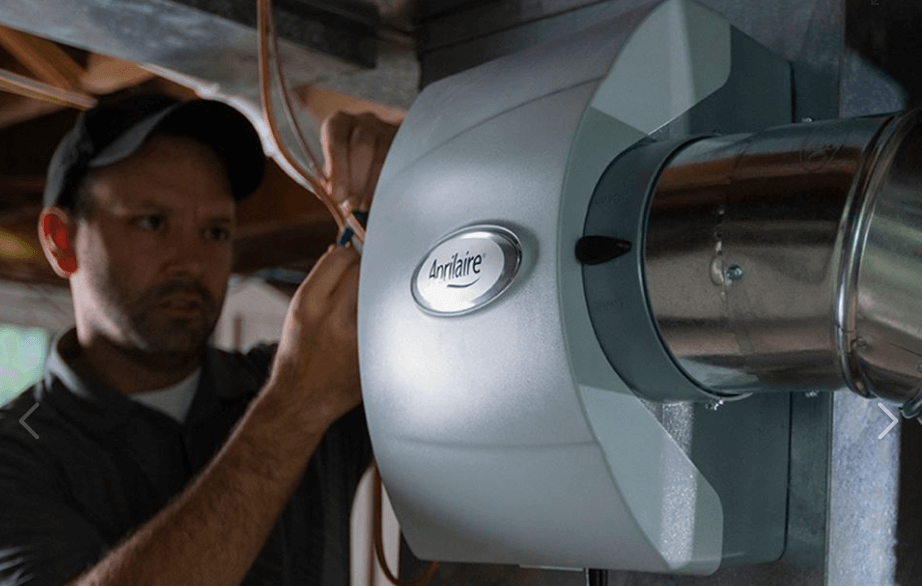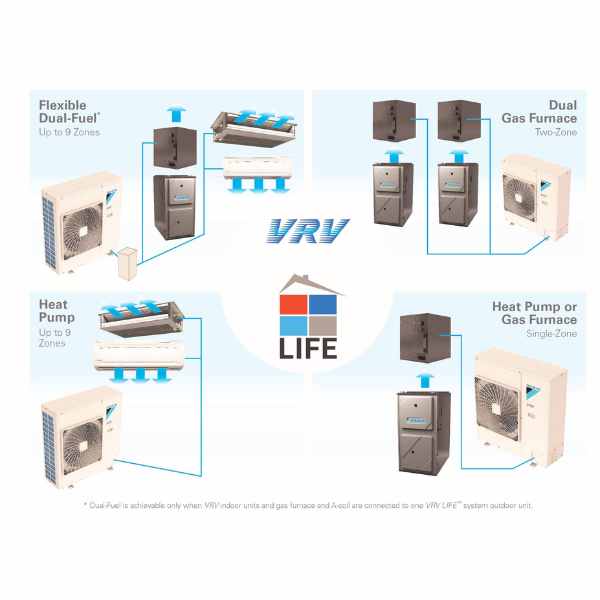The Best Way to Heat and Cool a Man Cave, Basement, or Recreation Room

Heating And Cooling A Finished Basement in Elgin, IL
A rec room, a man cave, a TV room, a home theater: However you use your finished basement, you need enough heat to be comfortable in the winter and humidity control to be comfortable in the summer.
And, in Elgin, being comfortable in the winter can be a challenge.
Basement renovations require more thought about retaining warmth than before.
We know all about the types of homes in Elgin, Barrington, East Dundee, and other Fox River Valley communities, and, we know the best ways to keep them comfortable.
In this post, we’ll talk about the best ways to keep your basement comfortable in every season. This starts with managing the thermal energy that’s already there. Then, you can consider seasonal or permanent installations.
The best solution for your home will depend on how big of a space you’re conditioning and how well it retains heat and humidity. After that, you can consider how different units will fit, what they’ll look like, and, of course, how much they’ll cost.
Start With An Energy Audit
First things first: make sure you’re not losing warmth. That goes for your whole house. So, before you start thinking about how to heat the downstairs, make sure you know what you’re up against.
An energy audit is when a trained HVAC professional assesses your home to find drafts and other areas where warmth (or air conditioning) escapes.
In the basement, we usually find a dryer vent that’s not sealed correctly. Or, maybe an old vanity window that’s letting out a lot of heat.
Whatever the case, you’ll get a checklist of problems to address so your HVAC system will use less energy. And, you’ll get a sense of the size of equipment you’ll need to add in the basement.
Add a Dehumidifier

Your energy audit may reveal a need for more insulation or eliminating drafts. Another step could be eliminating dampness.
Moisture in a basement makes it feel cold. You’ve probably noticed that concrete walls or floors in a cellar are cool to the touch. That’s because they’re damp.
A whole-home humidifier gets rid of that excess moisture. It’ll make the space warmer in the winter and prevent moisture damage to your furniture.
Extra Furnace Registers
Now, let’s get into adding heat. Your first option comes from what you’ve already got: Central heat.
Even though your furnace is in the basement, it’s often not serving that area of the house. You can change that by adding a register to the ductwork. This way, heat passing through the ducts will also treat the room down here.
Since the duct is usually in or next to a finished area, it’s a quick job. We shouldn’t need to add more ductwork, which would drive up the cost.
When it’s significantly colder than upstairs, however, this may not be the best option. That’s because your thermostat is in a warmer part of the house. It will reach its set point and shut off the furnace well before the downstairs is at the temperature you want.
Electric Heaters
Electric heaters are not always the best move when it comes to getting warm.
We definitely don’t recommend using space heaters. Sure, they’re cheap and widely available. And, there’s no installation. You plug them in and turn them on.
But, these aren’t great for heating an entire room for a long time. For starters, you shouldn’t leave them unattended as they’re known to start fires. They also use a lot of electricity to do the job.
But, with a little more investment, you can get something that’s safe and looks nice in the room.
Electric fireplaces are pretty popular. You can find one that matches your room’s design, and they’re safer to leave plugged in for a while. Plus, you can always move them around if you want to rearrange the room.
Pellet Stoves Add Heat to a Finished Basement
How about something closer to a real fireplace? Adding a pellet stove to a finished basement adds heat — and a little ambiance, too.
Pellet stoves are safer than space heaters and use less energy. You’ll have to buy the wood, of course. But they generate a lot of heat. Usually, you can feel it on the floor above, too.
They also look nice in the winter. And, you can choose from a wide variety of styles.
The only thing you’ll need to add is a vent pipe. That makes this a permanently-installed unit, unlike an electric fireplace. And, you’ll want a professional to do the job correctly and safely.
VRV and Mini Splits For Finished Basements
If your finished basement covers a lot of ground and gets chilly in the winter, you’ll want to consider a VRV or mini split system. In fact, you could treat the whole house this way if you wanted.

Daikin VRV Life
The idea here is to get the flexibility and punch of a gas furnace when you need it, but, you can use the ductless heat pump to heat, cool or, simply dehumidify the basement space. This will dramatically improve comfort while lowering your energy use.
These systems pack a lot of power. But, to seriously get the room comfortable — especially with as cold as winters get around here — this is the way to go.
This setup works because you’re using a heat pump combined with an air handler inside to circulate the air. There’s no ductwork or anything, and the air handler has a built-in thermostat.
This way, it measures the temperature of the room it’s in — not an area upstairs — and heats accordingly.
Now, let’s add in the flexibility. You can get a mini split to treat just one room. Or, you can get air handlers throughout the house and get rid of your old central heating system.
What we recommend, however, is a Daikin VRV Life system. These give you the best of both worlds.
You get high-efficiency heating and cooling with a heat pump and mini split. Then, the system automatically shifts over to a furnace when it needs some extra power. This keeps you warm even when the temperature outside is well below zero.
What’s the Best Way to Heat My Finished Basement?
Now that you’ve got some ideas on heating your finished basement, the question is: What’s the best option for your home?
Unfortunately, we can’t tell you that here. There’s no one-size-fits-all approach. Instead, you need to factor in how the room and your house is set up. And, of course, your budget.
But we can help you one-on-one. Compass Heating and Air offers free consultations year-round. When you’re ready to find the best way to add heat to your lower level, email or give us a call. We’re happy to help you get ready for winter without breaking the bank.


